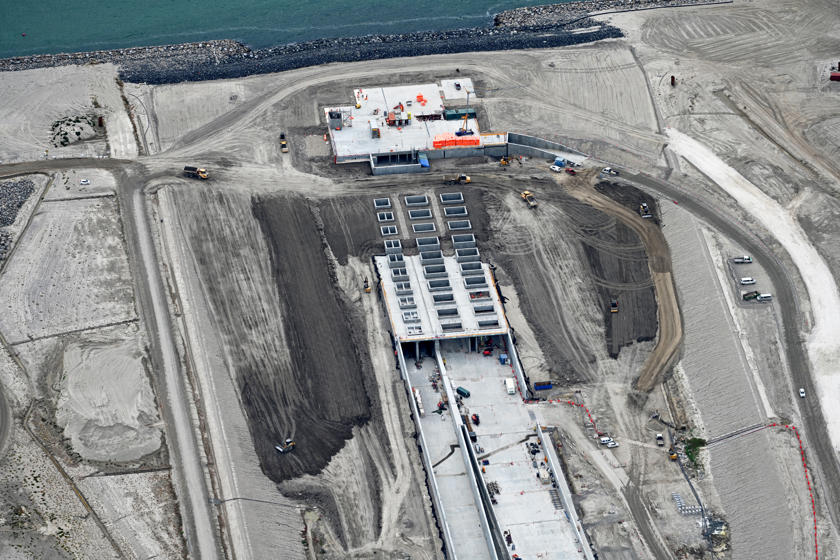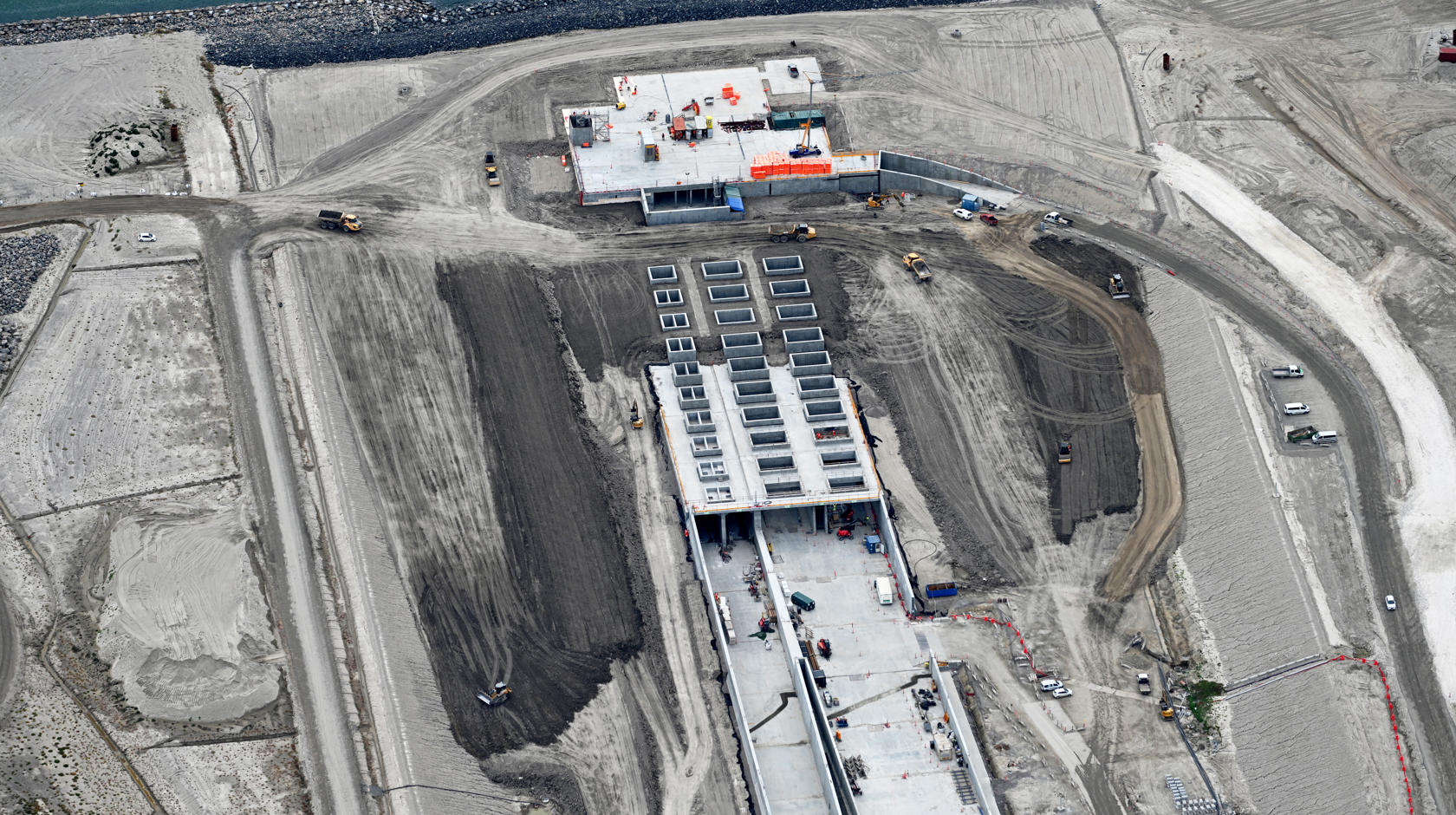The work on the entrance to the Fehmarnbelt tunnel at Rødbyhavn on Lolland is almost complete. The transition between the motorway and the railway on land and the tunnel underwater takes place via the so-called tunnel portal, which has been under construction since 2022.
Three years of work on the tunnel portal
The tunnel sections built on land are now being covered with earth. The Danish tunnel portal with its 160-metre-long cut-and-cover tunnel is nearing completion as the structure is gradually being covered. Over time, the covered section will seamlessly blend into the surrounding landscape, similar to the integration seen with the Great Belt and Øresund connections.
The covering of the tunnel on land marks yet another step forward in what is Denmark's largest infrastructure project, highlights Christian Oldenburg, Construction Manager at Sund & Bælt: “The covering of the tunnel is the preliminary culmination of three years of work on establishing the tunnel portal, which is designed to ensure a safe and secure transition for traffic entering and exiting the tunnel under the Fehmarnbelt. At the same time, it highlights the strong collaboration on the tunnel portal with the main contractor, Femern Link Contractors.”
Concrete work on the ramps
While the final earthworks are being completed above the land-based tunnel sections, Femern Link Contractors (FLC) continues the construction of the 800-metre-long ramp that will guide trains into the tunnel. So far, 300 metres of the ramp have been completed. Work is also underway on an operations building, which will later house facilities for operating personnel. From there, the tunnel’s systems and safety will be monitored.
The German tunnel portal
A tunnel portal is also being constructed on the German side at Puttgarden on Fehmarn. There, the front section of the portal has been under water since last year as well. Work on the operations building at the German entrance to the tunnel is also well advanced. It will house systems for the operation of the tunnel but will not be regularly staffed by operating personnel.
Major milestone: immersion of tunnel elements
This means that both tunnel portals are ready for the next milestone: immersing and connecting of the first tunnel elements underwater. However, before this process can begin, the specially built immersion vessels Ivy 1 & 2 must complete their final tests and obtain all the necessary permits. Sund & Bælt expects this to be finalised later this year. The first tunnel element will be immersed on the Danish side and connected to the tunnel portal at Rødbyhavn.

